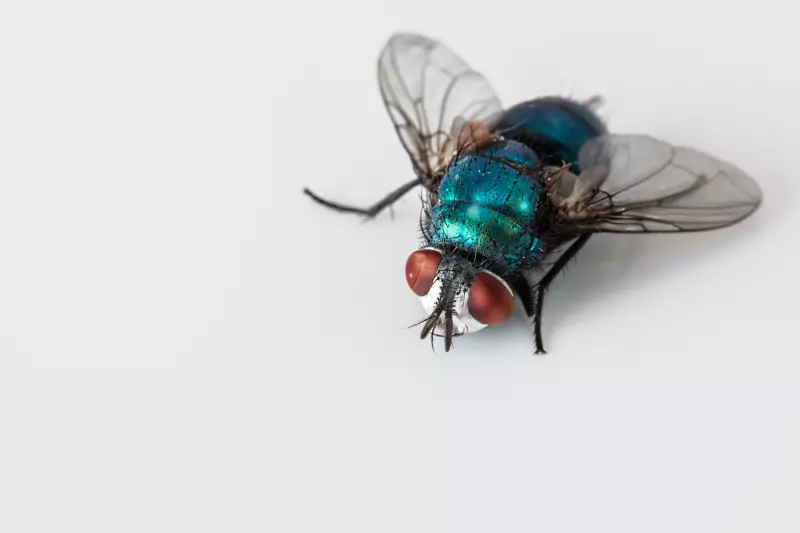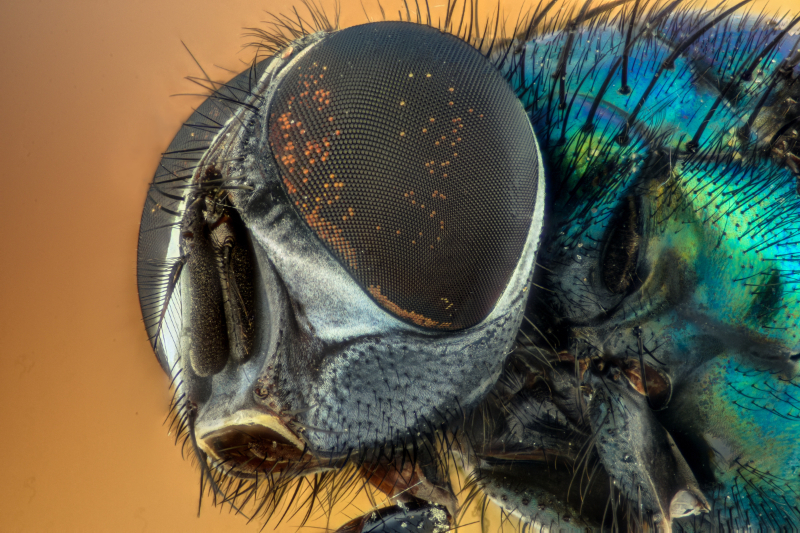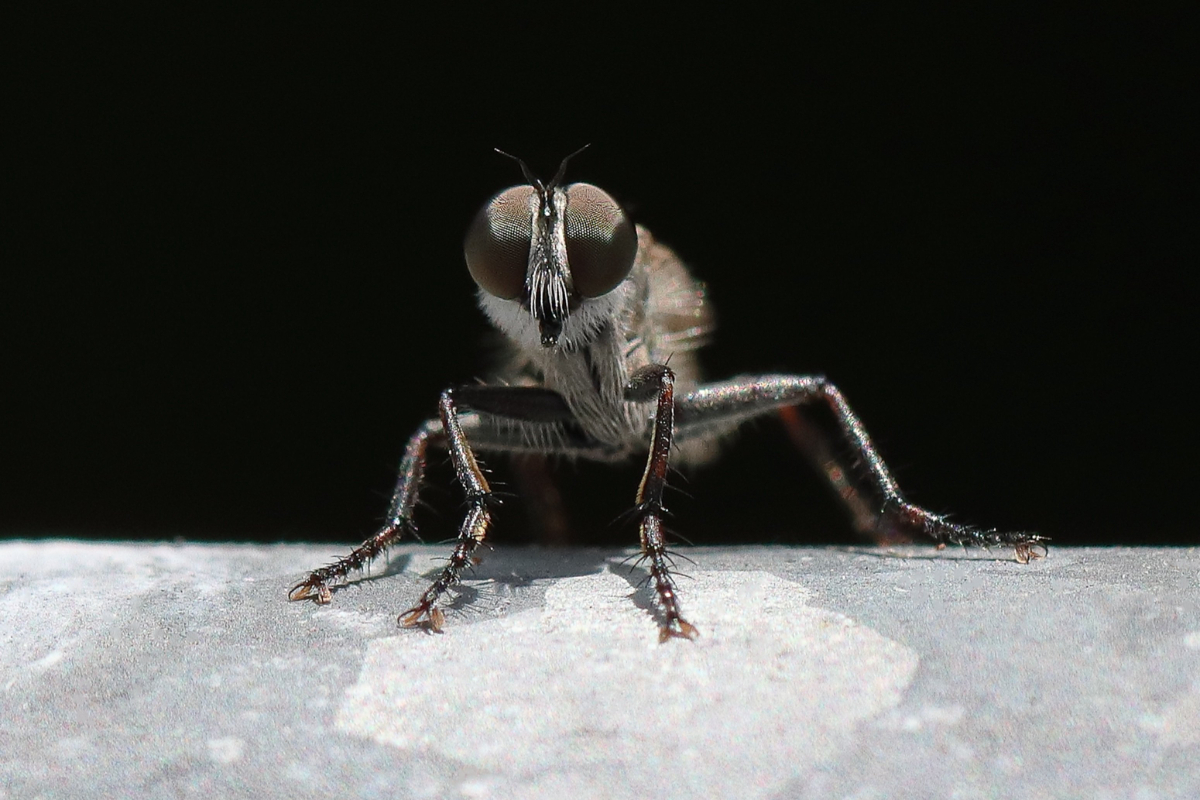Why is a fly a pest?
Why many fly species are considered a pest comes down to the very definition of pest. If an organism spreads disease, causes any form of destruction, or is considered a general nuisance with no other purpose, then they are a pest. It's commonly believed that most insects are pests, but this is incorrect, as many species serve a purpose in the ecosystem they reside in.
Take the fly, for example. There are over 120,000 species globally, and most of them have a purpose, so they cannot be considered a pest. Across the UK, we don't have anywhere nearly as many species like that, and it's only a staggeringly low 1% of the total fly species that are considered pests anyway.

Of course, many species are considered pests because of the health risks they pose to us, our animals and pets, and food. They can easily infest our homes and spread deadly diseases such as E-coli and Salmonella. For this reason, understanding how to best maintain fly control within your home is a smart idea.
Very few flies themselves, at least for species in the UK, are capable of biting or stinging you and don't pose a threat that way. However, they are attracted to dangerous and toxic things that they later carry and spread. If a fly has been in and around manure, food waste, decaying matter and surfaces, then they can unknowingly carry dangerous pathogens to our food and work surfaces.
Of course, they also can spread and breed incredibly quickly, only making this issue 10x worse. Adult flies will mate within 48 hours of themselves hatching and then can lay eggs of up to 150 within hours.
What Diseases Are Carried and Transmitted by Flies?
The World Health Organisation has estimated that the common housefly (which is only one of 7,000 species in the UK) can spread up to 65 diseases during its lifespan. Of course, this isn't long as the average adult housefly will live for approximately 30 days, but it's the breeding rate that is the threat.
E-coli
One of the most common diseases that flies can carry into our homes. Symptoms can consist of diarrhoea, blood in your stool, and vomiting, which is due to the pathogens house flies are carrying. Similar to this, food poisoning is common due to eating contaminated food. Symptoms can be similar, with stomach cramps and a fever.
Anthrax
Anthrax is a sometimes fatal disease spread by flies also. This is caused by flies feeding on anthrax-ridden carcasses or blood and then passing it to humans through spores invading the body. It can take four main forms and can affect the skin, lungs, and intestines. Symptoms can begin as a small blister-like swelling but can then turn into a more deadly ulcer. If you notice this, it needs treating as soon as possible.
Tularemia, Conjunctivitis, and Typhoid
These are also aggressive bacterial illnesses caused by the spread of pathogens by flies. Typhoid especially is highly contagious and can take the form of a simple fever at times. Once again, it's important to note any symptoms and stop the spread as efficiently as possible before anything worsens.
Common Fly Species
Not all flies are the same, and it's important to have a slight understanding of how your home, business, or organisation could be affected by varying species. Certain fly species have different mating periods, are attracted to different things, and have a unique life cycle.
Domestically, the most common species you will encounter will be the house fly. They tend to invade the house as they're attracted to human food, pet food, and food waste, and sometimes even faeces.
This means that if you have a house full of people, coming and going, and different goings-on, then you will have house flies around. Visually, you can differentiate them from their abdomen, as it's typically buff and yellow compared to other species. If it reaches the point where they are allowed to reproduce on your property, then the larvae will be white and can be seen to have a tapered point at their head.

Another type of house fly is the cluster fly, which will more commonly be found in quieter parts of your house. This could be the attic/loft or in the wall void(s). Anywhere that could get warm over winter is ideal, as they need that to hibernate. Cluster flies will also be the type of flies you see around your window and windowsill, as they're attracted to the warmth of the sun and light on brighter days. They will appear darker, almost a dark grey olive, and will generally be slower whilst in flight.
It's worth checking around your bins and rubbish, for most fly species but especially for Bluebottle flies. They are more scavenger-based and are attracted to dead animals and pet faeces, so if you see a large collection at any point, you may have a dead animal somewhere you're unaware of.
They're easy to spot and remember, as their name originates from the similarity in colour they hold to tinted, coloured bottles. Fruit flies could also reside around your bins or compost with decomposing fruit within. They can infest around places such as pubs also, and fruit orchards and vegetable orchards. A fruit fly, as with most of these species, will be attracted to any organic matter that is left unattended. These can be easily identified by their red eyes, so keep an eye out.

Horseflies will be more prevalent around livestock, so anyone who tends to farmland could be at risk here. They continue to prove to be a pest to livestock, especially when ongoing biting can occur. This can lead to reduced weight gain in some animals. A bite from a horsefly can also be painful to humans, as their mouths work like a series of knives, slashing into the skin with ease. Horseflies are black to dark brown, with green or black eyes.
Autumn flies will also affect your livestock, and you'll be able to notice them immediately as they reside on the face and eyes of cattle. They choose to reside there due to their attraction to saliva, nasal mucus, and tears.
Interestingly, when it comes to vegetation and greenhouses, the ecosystem of flies within can offer benefits also, so it's worthwhile learning which species to keep. Lacewing flies are a key predator of plant-killing bugs such as mealybugs, so they are considered less of a pest than other fly species. In some cases, they can also help with population control of aphids, spider mites, and caterpillars.
However, whiteflies are a threat to your garden or greenhouse. They can cause damage to your greenery and plans but sucking out the sap and depositing eggs onto the younger leaves. They are white and can resemble a wedge shape.
Filter flies, Crane flies, and yellow swarming flies are also considered pests to the UK community but generally offer no more threat than any other species. It's still important to remain wary and put in precautions in the form of pest control before the problem becomes an infestation.
Signs of a Fly Infestation
Flies in and around your home aren't necessarily a bad sign, as we've discussed. Some flies can be offering helpful insect deterrents and will be playing a part in an ecosystem that you're not even aware of. However, if you're beginning to notice larger groups or clusters, especially around the areas we've discussed, then there could be a fly infestation in your house.
Larvae and maggots are also a large indicator that something is happening, as this implies that fly breeding is being allowed to occur.
Flies like and need light and water, so check areas around the house or work that fit that criteria. Light fixtures or gutters could begin to get congested, especially if something has died. This will also be amplified in summer due to the increased heat. Flies will be attracted to rotting or decomposing carcasses, so this should be considered as the cause.
If you're noticing an increase in dead flies as well, don't take this lightly. If they're getting into your house and are dying, then there's probably a reason they're coming inside in the first place. If you're concerned about large numbers of flies within your home, you must contact the British Pest Control Association (BPCA).
Fly Prevention
Flies will get into your house no matter what precautions you put into place, and it will be near impossible to get rid of them forever. However, you can do things to stop this from becoming an overwhelming problem for you and your family. The simplest option is to prevent physical access to the flies, such as installing fly screens in and around your kitchen.
Make sure food is covered where possible and ensuring nothing is left out overnight is essential. Close all windows and doors too, and close curtains to further prevent access. A popular and simple means of killing any flies that have managed to get inside is a sticky trap, taking various forms. Essentially, the tape works by attracting flies to it, and the strong adhesive qualities will keep them from flying away, killing them.
The sticky effect can last up to 8 weeks in some cases. A variety of fly killers and methods are available depending on the situation. If the flies have reached the breeding stage, and you have found a group of maggots or larvae, then simply pour boiling water over the area to kill them.
You can prevent larvae from forming and growing in areas that could have water or food leakage, such as broken gutter pipes or underneath fridges. These are going to be hotspots for flies, so be sure to keep sanitisation to a high.
In worse cases where the problem doesn't appear to lessen, despite the precautions you've put into place, an exterminator is always an option. They will be able to search around your property for the type of fly and best precautions to put in place.
Fly repellent, insecticide and other chemicals will be used, but the problem will arise again if you're not properly sanitising and cleaning your home environment. It's important, therefore, to provide the source of the problem with the treatment, hopefully preventing a resurface of flies and other pests.
l today to answer any concerns or advice you need about pests and the safety of your home!

Are you looking for fly control services?
Do you have a fly problem in Burton upon Trent or Staffordshire?
If you would like to find out more information about the fly control services we offer follow the link below.
fly Control services

